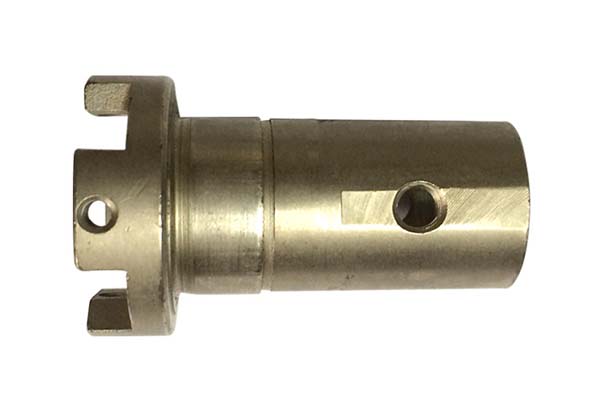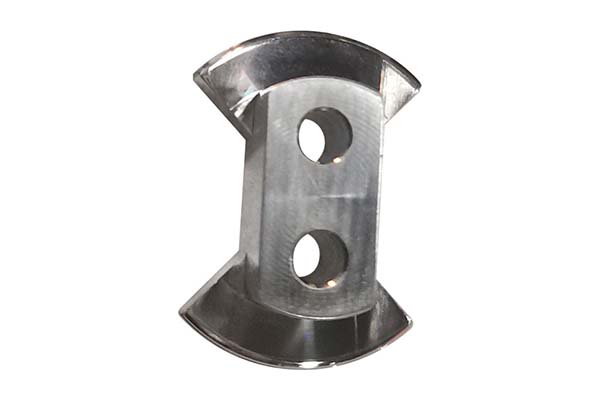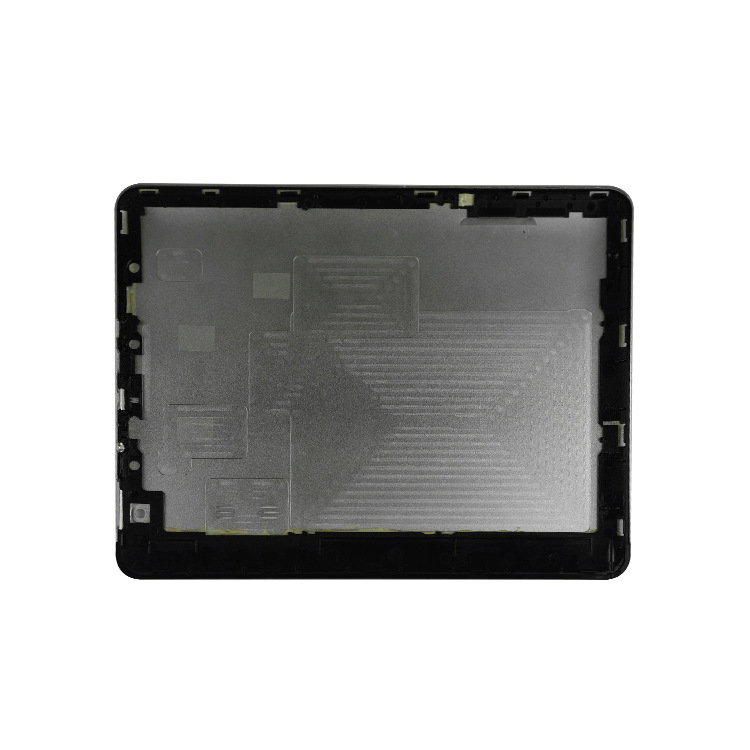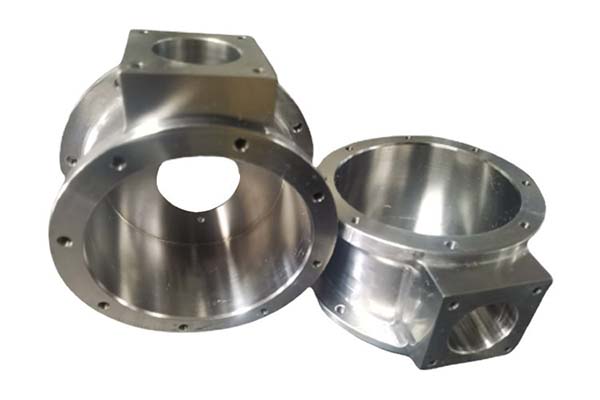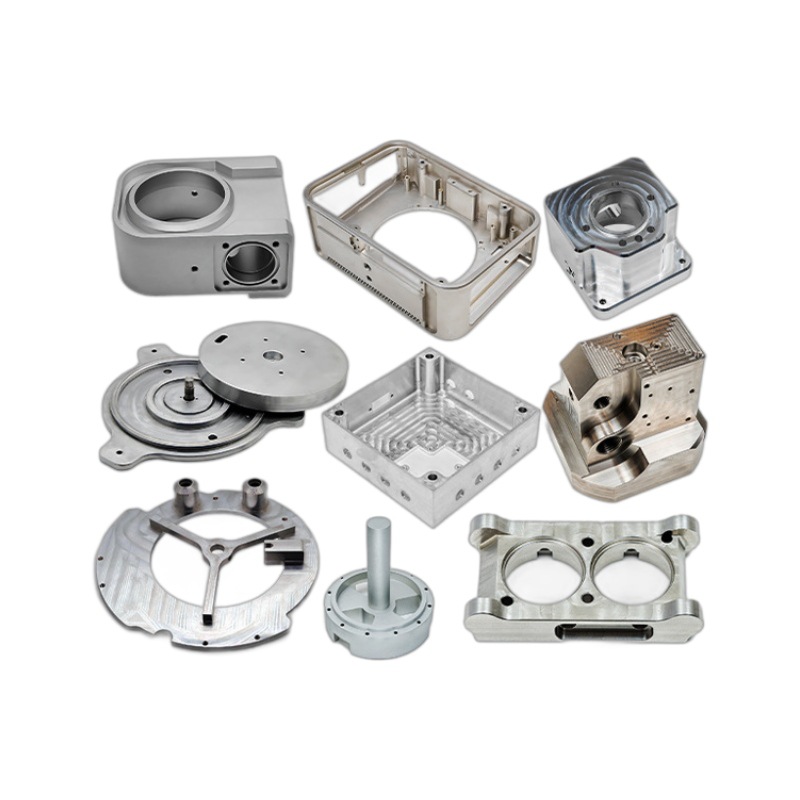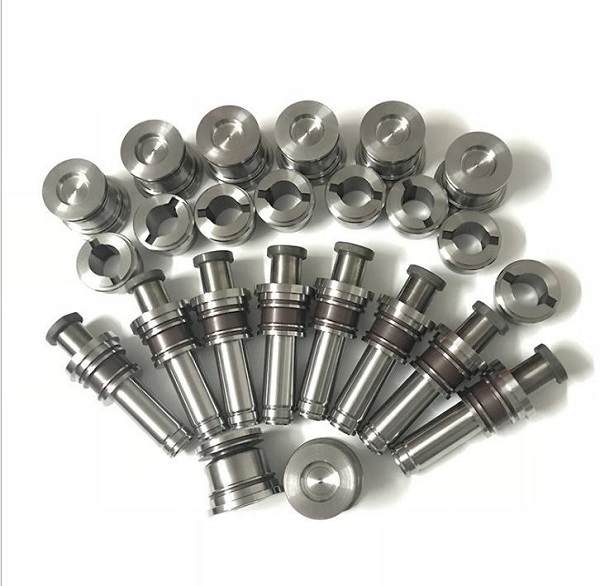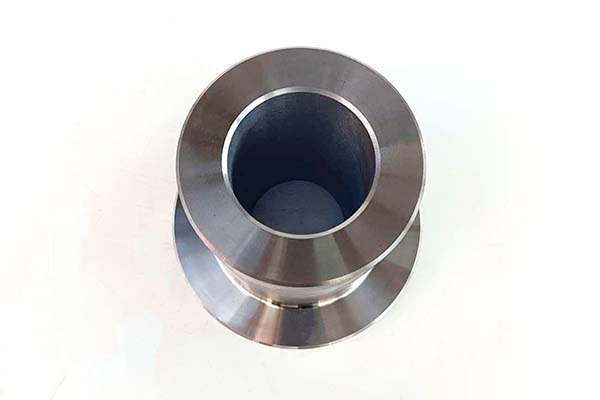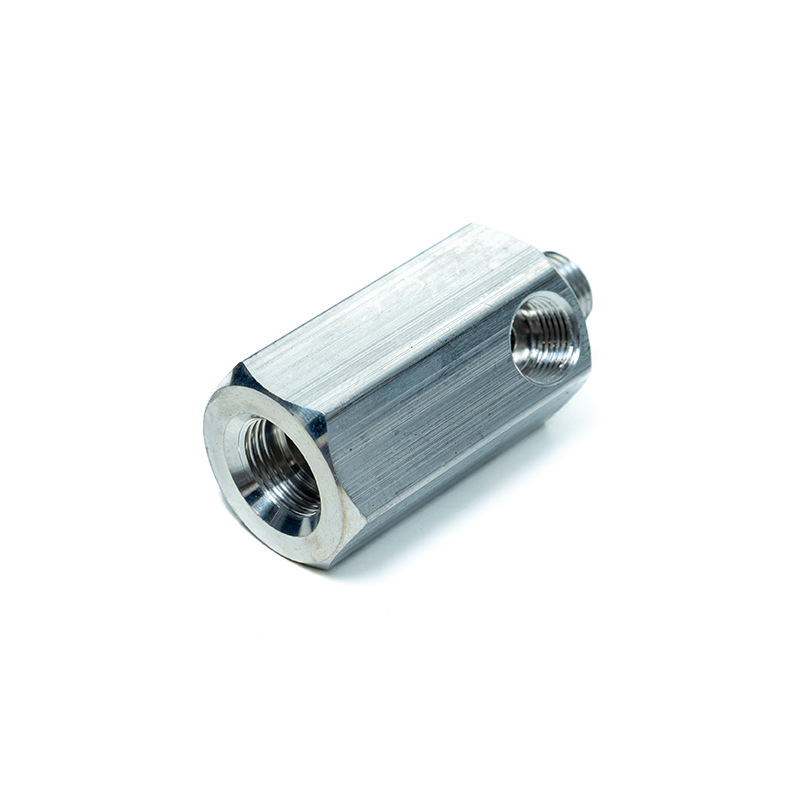In the world of precision manufacturing, CNC machining has emerged as a cornerstone technology, enabling the creation of intricate parts with high accuracy. When it comes to working with specific materials like C23000 red brass, understanding the nuances of the alloy and its machining requirements is crucial. Many manufacturers struggle with achieving the desired results when machining C23000 red brass. Issues such as poor surface finish, short tool life, and difficulties in chip control can lead to increased costs and lower productivity. In this article, we will delve deep into the world of CNC machining of C23000 red brass, providing you with the knowledge and techniques to overcome these challenges.
Alloy Overview & Characteristics of C23000 Red Brass
C23000 red brass is an alloy that stands out for its unique composition and properties. Composed of 85% copper (Cu) and 15% zinc (Zn), it derives its characteristic reddish color from the high copper content. One of its notable features is its low lead content, which is typically less than 0.05%. This makes it a suitable choice for applications where lead exposure needs to be minimized, such as in plumbing fittings and food - handling equipment.
In terms of mechanical properties, C23000 red brass has a tensile strength ranging from 275 - 440 MPa. This relatively high strength, combined with its excellent formability, allows it to be shaped into complex geometries. Its electrical conductivity is quite impressive, with a value of 75% IACS (International Annealed Copper Standard), making it useful in electrical applications.
The alloy also exhibits excellent cold - workability. This means that it can be easily formed and shaped at room temperature, reducing the need for additional heat treatment processes in many cases. C23000 red brass has good corrosion resistance, which makes it suitable for use in environments where it may be exposed to moisture or other corrosive agents. For example, in marine applications, its resistance to corrosion helps to ensure the longevity of components. Its density of 8.75 g/cm³ is another characteristic that needs to be considered during machining, as it affects factors such as cutting forces and chip formation.
CNC Machining Parameters & Techniques for C23000 Red Brass
Cutting Speed
Determining the right cutting speed is crucial when machining C23000 red brass. If the cutting speed is too high, it can lead to excessive heat generation, which in turn can cause premature tool wear, poor surface finish, and even damage to the workpiece. On the other hand, if the cutting speed is too low, the machining process will be inefficient, increasing production time and costs.
For C23000 red brass, a cutting speed in the range of 100 - 300 m/min is often recommended, depending on factors such as the type of cutting tool, the depth of cut, and the diameter of the workpiece. For example, when using a carbide cutting tool for a relatively small - diameter workpiece with a shallow depth of cut, a cutting speed towards the higher end of this range may be suitable. However, for larger - diameter workpieces or deeper cuts, a lower cutting speed may be necessary to maintain control over the machining process.
Feed Rate
The feed rate is another critical parameter. A proper feed rate ensures efficient material removal while maintaining good surface finish and tool life. For C23000 red brass, a feed rate typically ranges from 0.05 - 0.3 mm/rev. When machining thin - walled components, special attention needs to be paid to the feed rate to avoid deformation. In such cases, a lower feed rate, perhaps around 0.05 - 0.1 mm/rev, may be more appropriate to optimize the process and prevent the thin walls from being distorted.
Depth of Cut (DOC)
The depth of cut should be carefully selected based on the workpiece dimensions, the strength of the cutting tool, and the available power of the CNC machine. For general machining of C23000 red brass, a depth of cut can range from 0.5 - 3 mm. However, when working on parts with tight tolerances or when trying to achieve a specific surface finish, the depth of cut may need to be adjusted accordingly. For example, if a very smooth surface finish is required, starting with a smaller depth of cut and making multiple passes may be necessary.
Chip Control
One of the challenges in machining C23000 red brass is dealing with the soft and gummy nature of the chips it produces. These chips can easily adhere to the cutting tool and the workpiece, leading to poor surface finish and increased tool wear. To address this, proper chip control techniques are essential. Using a coolant, either in the form of a mist or flood coolant, can help to break up the chips and flush them away from the cutting area. Additionally, choosing a cutting tool with a geometry that promotes chip breaking, such as a tool with serrated edges or a specific chip - breaker design, can be beneficial.
Tooling & Edge Geometry for C23000 Red Brass Machining
Sharp Carbide Inserts
Sharp carbide inserts are highly recommended for machining C23000 red brass. Carbide tools offer excellent hardness and wear resistance, which are crucial for efficient machining of this alloy. The sharp edges of the inserts help to shear the material cleanly, reducing the likelihood of built - up edge formation. When selecting carbide inserts, it is important to consider their grade. For C23000 red brass, a carbide grade with a relatively high cobalt content may be more suitable, as it provides better toughness and can withstand the forces involved in the machining process.
High - Positive Rake and Polished Tools
Tools with a high - positive rake angle are preferred for C23000 red brass machining. A high - positive rake angle reduces the cutting forces and promotes better chip flow. Additionally, polished tool surfaces can further improve chip evacuation and prevent the chips from sticking to the tool. The polished surface reduces friction between the tool and the workpiece, resulting in a smoother machining process and a better surface finish.
TiAlN Coating for Anti - Adhesion
Applying a TiAlN (Titanium Aluminum Nitride) coating to the cutting tools can significantly enhance their performance when machining C23000 red brass. The TiAlN coating has excellent anti - adhesion properties, which helps to prevent the build - up of brass on the tool surface. This, in turn, prolongs the tool life and improves the surface finish of the workpiece. The coating also provides increased hardness and wear resistance, allowing the tool to withstand higher cutting temperatures.
Single - Flute Endmills and Diamond - Coated Micro - Tools
For certain applications, such as machining intricate features or small - scale components, single - flute endmills can be very effective. They offer better chip evacuation in tight spaces and can provide more precise machining. In cases where ultra - precision machining is required, diamond - coated micro - tools can be used. Diamond coatings provide extremely high hardness and wear resistance, making them ideal for machining C23000 red brass to very fine tolerances.
Toolholder Balance
Ensuring that the toolholder has a balance of less than 0.005 mm runout is crucial for precision machining. A well - balanced toolholder helps to minimize vibrations during the machining process. Vibrations can lead to poor surface finish, uneven cutting, and increased tool wear. By maintaining a low runout in the toolholder, the cutting tool can operate more smoothly, resulting in higher - quality parts.
Surface Finish & Post - Processing of C23000 Red Brass
Achieving a Low Ra Value in Turning
When turning C23000 red brass, it is possible to achieve a very low surface roughness value, with an Ra (arithmetical mean deviation of the assessed profile) of 0.1 µm or even lower under optimal conditions. To achieve this, a combination of factors needs to be considered. Using a sharp cutting tool with a fine edge, setting appropriate cutting parameters (such as a low feed rate and a suitable cutting speed), and ensuring proper coolant application are all essential. For example, a slow and steady feed rate will result in a smoother cut, reducing the peaks and valleys on the surface of the workpiece.
Mirror Polish for C23000
For applications where a mirror - like finish is required, such as in decorative trim panels or high - end jewelry, mirror polishing of C23000 red brass can be carried out. The polishing process typically involves a series of steps, starting with coarse grinding to remove any major surface imperfections, followed by progressively finer polishing using abrasive compounds. The final step may involve using a very fine polishing paste to achieve the mirror - like finish. This process not only improves the aesthetic appearance but also can enhance the corrosion resistance of the surface.
Oxide Removal and Tarnish Protection
Over time, C23000 red brass can develop an oxide layer on its surface, which may affect its appearance and performance. Oxide removal can be achieved using a citric acid solution. Citric acid is a mild acid that can effectively dissolve the oxide layer without causing significant damage to the underlying brass. After oxide removal, it is often necessary to apply a tarnish protection measure. One common method is to apply a lacquer coating. The lacquer forms a protective barrier between the brass surface and the environment, preventing oxidation and tarnishing.
Ultrasonic Cleaning and Deburring
Ultrasonic cleaning is an effective way to remove any remaining contaminants, such as machining debris or polishing compounds, from the surface of C23000 red brass parts. The ultrasonic waves create cavitation bubbles in the cleaning solution, which effectively dislodge and remove the particles. After machining, the parts may also have sharp or rough edges that need to be addressed. Deburring of the soft edges can be done using various methods, such as hand - filing, abrasive blasting, or using specialized deburring tools. This ensures that the parts are safe to handle and can be assembled properly.
Applications & Industry Examples of C23000 Red Brass
Plumbing Fittings
C23000 red brass is widely used in the production of plumbing fittings due to its excellent corrosion resistance and workability. CNC machining allows for the creation of highly precise fittings with complex geometries. For example, elbows, tees, and valves can be machined to tight tolerances, ensuring a proper fit and leak - free connections in plumbing systems. The low lead content of C23000 red brass also makes it a safe choice for use in potable water systems.
Architectural Hardware
In the field of architecture, C23000 red brass is used to create architectural hardware such as door handles, hinges, and decorative trim. The reddish color of the alloy adds an aesthetically pleasing touch to buildings. CNC machining enables the production of intricate designs with high precision, enhancing the overall look of the hardware. For instance, ornate door handles can be machined to exact specifications, combining functionality with beauty.
Musical Instrument Mouthpieces
Musical instrument mouthpieces, especially those for brass instruments like trumpets and trombones, are often made from C23000 red brass. The alloy's acoustic properties, combined with its workability, make it an ideal choice. CNC machining allows for the precise shaping of the mouthpiece, which is crucial for producing high - quality sound. The smooth surface finish achievable through CNC machining also affects the player's embouchure and the overall performance of the instrument.
Electrical Terminals
Given its good electrical conductivity, C23000 red brass is used in the manufacturing of electrical terminals. CNC machining ensures that the terminals are produced with the required precision, allowing for reliable electrical connections. The corrosion resistance of the alloy also helps to prevent the formation of oxide layers that could impede electrical conductivity over time.
Decorative Trim Panels and Jewelry - Grade Red Brass Case Study
In the production of decorative trim panels for luxury cars or high - end furniture, C23000 red brass is a popular choice. CNC machining enables the creation of detailed patterns and designs on the panels. A case study in the jewelry industry shows that C23000 red brass, when machined with high precision using CNC techniques, can be used to create unique and high - quality jewelry pieces. The ability to achieve a mirror - like finish through post - processing further enhances the appeal of these items.
Yigu Technology, as a parts custom manufacturing supplier, understands the importance of precision when working with C23000 red brass. Our experienced team is well - versed in optimizing CNC machining parameters to ensure high - quality output. We carefully select the appropriate tooling and follow strict post - processing procedures to achieve the desired surface finish. Whether it's producing complex plumbing fittings or intricate jewelry components, we are committed to delivering parts that meet the highest standards.
FAQ
- What is the best coolant to use when machining C23000 red brass?
Both mist and flood coolants can be effective. Water - soluble coolants are often preferred as they provide good cooling and lubrication, helping with chip control. However, for some applications, oil - based coolants may be used to enhance surface finish.
- Can C23000 red brass be machined using 3D printing techniques?
While CNC machining is the more common method for C23000 red brass, some 3D printing techniques can be used. However, the properties of the printed part may differ from those of the machined part. For high - precision and high - performance applications, CNC machining is still the recommended approach.
- How can I extend the tool life when machining C23000 red brass?
Using sharp carbide inserts with appropriate coatings (such as TiAlN), setting proper machining parameters (cutting speed, feed rate, depth of cut), and ensuring effective chip control are key. Regularly inspecting and replacing worn - out tools in a timely manner also helps to extend overall tool life.
